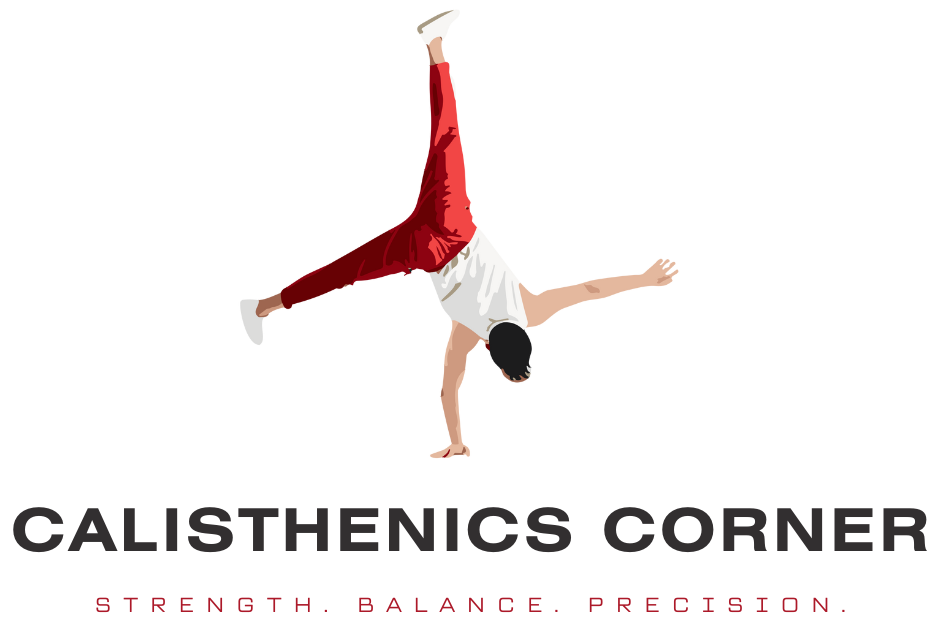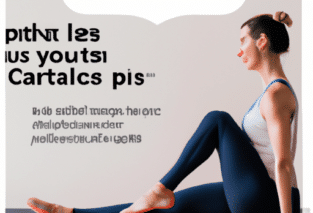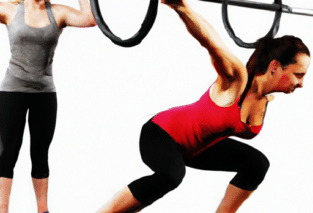Hey there! Have you ever wondered if pull-ups qualify as calisthenics? Well, you’re in luck! In this article, we’ll explore the age-old question: Are Pull-Ups Calisthenics? Brace yourself for an informative journey as we uncover the truth behind this popular exercise and its classification within the realm of calisthenics. Get ready to challenge your muscles and expand your knowledge as we settle this pull-up debate once and for all. So, let’s jump right in!
What is calisthenics?
Definition
Calisthenics is a form of exercise that utilizes the weight of the body instead of external weights or machines. It involves performing a variety of bodyweight movements, such as push-ups, squats, and planks, to improve strength, flexibility, and endurance. Calisthenics is a versatile and accessible workout option that can be done anywhere, making it popular among individuals who prefer to exercise without relying on traditional gym equipment.
History
The roots of calisthenics can be traced back to ancient Greece, where it was an integral part of their daily lives and physical training. The word “calisthenics” itself is derived from the Greek words “kalos” and “sthenos,” which mean beauty and strength respectively. Calisthenics exercises were originally performed to promote physical prowess and aesthetic beauty, showcasing the human body’s capabilities. Over time, calisthenics has evolved, incorporating different disciplines such as gymnastics, street workout, and freestyle calisthenics.
Benefits
Calisthenics offers a wide range of benefits that make it an excellent choice for individuals of all fitness levels. First and foremost, it provides a full-body workout, engaging multiple muscle groups simultaneously. This holistic approach to training contributes to improved coordination and the development of a balanced physique. Additionally, calisthenics promotes strength and muscular endurance, allowing you to perform everyday tasks with greater ease. By utilizing bodyweight movements, calisthenics also enhances functional fitness, helping you move more efficiently in daily activities. Furthermore, this form of exercise requires little to no equipment, making it accessible to anyone, anywhere. Lastly, calisthenics promotes bodyweight control and flexibility, allowing you to become more in tune with your own body and its capabilities.
What are pull-ups?
Definition
Pull-ups are a specific exercise within the broader category of calisthenics. They primarily target the muscles of the upper body, specifically the back, shoulders, and arms. Pull-ups involve hanging from a bar with an overhand grip and pulling your body up until your chin reaches or clears the bar. This exercise can be modified to suit various fitness levels, making it suitable for beginners and advanced athletes alike. Pull-ups are a highly versatile exercise that can be performed with minimal equipment and are a staple in calisthenics routines.
Types of pull-ups
There are several variations of pull-ups that target different muscle groups and provide varying levels of difficulty. Some of the most common types of pull-ups include:
- Wide-grip pull-ups: These involve gripping the bar with your hands placed wider than shoulder-width apart. Wide-grip pull-ups primarily target the muscles of the back, particularly the latissimus dorsi.
- Close-grip pull-ups: In this variation, the hands are placed closer together, with the palms facing towards you. Close-grip pull-ups put more emphasis on the muscles of the arms, particularly the biceps.
- Chin-ups: Chin-ups are similar to pull-ups but with an underhand grip, palms facing towards you. They primarily target the muscles of the arms, particularly the biceps, but also engage the back muscles.
- Archer pull-ups: Archer pull-ups involve using one arm while the other arm provides assistance, allowing you to focus on each side individually. This variation challenges the muscles of the back and arms in a different way, providing a unique stimulus for growth and strength.
- L-sit pull-ups: L-sit pull-ups are performed with straight legs elevated in front of the body, requiring significant core strength. This variation not only targets the upper body muscles but also engages the abs and hip flexors.
Muscles worked
Pull-ups primarily target the muscles of the upper body, with an emphasis on the back, shoulders, and arms. The main muscles worked during pull-ups include:
- Latissimus dorsi (lats): These are the large muscles of the back that give the appearance of a “V” shape when well-developed. Pull-ups are one of the most effective exercises for targeting and strengthening the lats.
- Rhomboids: Located between the shoulder blades, the rhomboids play a crucial role in retracting and stabilizing the scapulae during pull-ups.
- Biceps brachii: The biceps are worked significantly during pull-ups, especially in variations like chin-ups that require a supine grip.
- Forearms: Pull-ups engage the muscles of the forearms, particularly the brachioradialis and flexor muscles, due to the gripping and pulling motion.
- Deltoids: The deltoids, or shoulder muscles, assist in the pulling motion during pull-ups.
Comparison between calisthenics and pull-ups
Calisthenics as a broader category
Calisthenics encompasses a wide range of exercises, including pull-ups, push-ups, squats, planks, and many more. It is a comprehensive form of exercise that targets various muscle groups and promotes strength, flexibility, and endurance. While pull-ups are an important component of calisthenics, they are just one piece of the puzzle. Calisthenics allows for a diverse and well-rounded workout routine that can be customized to individual goals and preferences.
Calisthenics vs. weighted exercises
One of the key differences between calisthenics and weighted exercises is the use of external weights. Calisthenics relies solely on the weight of your body, while weighted exercises incorporate additional resistance such as dumbbells, barbells, or weight machines. Calisthenics offers a unique advantage as it not only builds strength but also improves bodyweight control and relative strength. Weighted exercises, on the other hand, allow for greater emphasis on muscle hypertrophy and provide a wider range of resistance options for progressive overload.
Calisthenics vs. traditional gym workouts
Calisthenics and traditional gym workouts differ in terms of equipment and training methods. Traditional gym workouts usually involve the use of machines, free weights, and resistance training equipment. In contrast, calisthenics emphasizes bodyweight movements and can be performed with little to no equipment. While traditional gym workouts provide a wider variety of resistance options, calisthenics offers the advantage of versatility, accessibility, and the ability to train anywhere. Additionally, calisthenics incorporates more functional movements, mimicking natural human movements and enhancing overall physical fitness.
Calisthenics vs. bodybuilding
Calisthenics and bodybuilding have different goals and training methodologies. Bodybuilding focuses on developing muscle size and aesthetic appeal through targeted resistance training and nutrition. Calisthenics, on the other hand, emphasizes functional strength, bodyweight control, and overall fitness. While both forms of exercise can complement each other, calisthenics offers the added benefit of promoting bodyweight mastery, enhancing muscular endurance, and improving functional movement patterns.
Benefits of incorporating pull-ups into a calisthenics routine
Pull-ups are a valuable exercise to incorporate into a calisthenics routine for several reasons. Firstly, pull-ups engage multiple muscle groups, making them an efficient choice for upper body development. Secondly, they can be adjusted to suit different fitness levels through variations and progressions, allowing beginners to build strength gradually. Thirdly, pull-ups target specific muscles, such as the back and arms, that are crucial for overall upper-body strength and aesthetics. Lastly, pull-ups enhance grip strength, which is beneficial for various daily activities and other calisthenics exercises.
Skill requirement and progression
Skill requirement for calisthenics
Calisthenics exercises vary in complexity, and therefore the skill requirements can differ. Some exercises, such as basic push-ups and squats, have lower skill requirements and can be easily mastered by beginners. On the other hand, more advanced moves like planche push-ups or front lever require significant strength, body control, and technique. The skill requirement for calisthenics can be developed gradually by practicing progressions and mastering the fundamentals before moving on to more advanced movements.
Skill requirement for pull-ups
Pull-ups, though considered a fundamental exercise in calisthenics, do require a certain level of skill and strength. Performing a proper pull-up involves using the correct form, engaging the targeted muscles, and executing the movement smoothly. Beginners may start with assisted pull-ups using resistance bands or utilizing a chair or partner for assistance. As strength and technique improve, individuals can progress to unassisted pull-ups, aiming for higher reps and stricter form.
Progression techniques in calisthenics
Calisthenics offers a variety of progression techniques that allow individuals to gradually increase the challenge of exercises. Some common progression techniques include:
- Increasing range of motion: For exercises like squats or push-ups, gradually increasing the depth or range of motion can enhance the difficulty and muscle activation.
- Reduced leverage: This involves shifting bodyweight distribution or changing body angles to increase the difficulty. For example, performing push-ups with hands elevated on blocks or using rings instead of a bar for pull-ups.
- Tempo variations: Altering the speed at which you perform an exercise can create different training stimuli. Slowing down the eccentric (lowering) phase or pausing at certain points can increase time under tension and intensity.
- Isometric holds: Incorporating static holds at specific points in an exercise can challenge stability, strength, and endurance. Examples include paused squats at the bottom position or static holds during push-ups or pull-ups.
Progression techniques in pull-ups
For pull-ups, there are several progression techniques that can be used to gradually improve strength and performance:
- Assisted pull-ups: Utilize resistance bands or a partner to assist in lifting your bodyweight, gradually reducing assistance as strength improves.
- Negatives: Start at the top position of the pull-up and slowly lower yourself down, focusing on controlled eccentric contractions. This technique helps build strength in the pulling muscles.
- Isometric holds: Perform static holds at various points throughout the pull-up range of motion. Initially, focus on holding positions at the top and bottom of the movement, gradually progressing to mid-range positions.
- Increased volume: Incorporating more sets and repetitions of pull-ups over time can contribute to increased strength and endurance. Gradually increase the volume while maintaining good form to avoid overtraining or injury.
Physical demands and intensity
Physical demands of calisthenics
Calisthenics exercises can vary in intensity and physical demands depending on the specific movement and the individual’s fitness level. Some calisthenics exercises, such as basic push-ups or squats, have lower physical demands and can be performed by beginners. However, more advanced movements, like planche or handstand push-ups, require significant strength, stability, and mobility. As individuals progress in calisthenics, the physical demands increase, challenging the muscles, cardiovascular system, and overall body control.
Physical demands of pull-ups
Pull-ups are a demanding exercise that requires upper body strength, grip strength, and core stability. It engages multiple muscle groups simultaneously, placing substantial demands on the upper back, shoulders, and arms. The physical demands of pull-ups can be adjusted through variations and modifications to suit different fitness levels. Beginners may start with assisted pull-ups or variations with reduced leverage, gradually progressing to strict pull-ups with proper form.
Intensity levels in calisthenics
Calisthenics exercises can be adjusted to different intensity levels based on factors such as repetitions, sets, tempo, and difficulty of the movement. Higher intensity levels can be achieved by increasing resistance, decreasing rest periods, incorporating advanced progressions, or performing exercises at a faster pace. Intensity in calisthenics is subjective and can be tailored to individual goals, whether it be strength gain, endurance, or hypertrophy.
Intensity levels in pull-ups
The intensity of pull-ups can be modulated by altering specific variables such as grip width, tempo, and range of motion. Wider grip pull-ups generally increase the challenge, as the lats and upper back muscles are engaged more intensely. Slowing down the tempo or performing controlled negatives can increase time under tension and subsequently the intensity. Additionally, increasing the range of motion by going beyond the point of chin clearing the bar can further intensify the exercise.
Safety considerations
Proper form and technique for calisthenics
Proper form and technique are essential when performing calisthenics exercises to prevent injuries and maximize results. Some key points to keep in mind include:
- Maintain a neutral spine: Avoid rounding or arching your back excessively during movements, as this can strain the spine. Keep the core engaged and the back straight.
- Proper joint alignment: Ensure that joints, such as the knees and elbows, are properly aligned throughout the exercise. This helps distribute the load evenly and reduces the risk of joint strain.
- Full range of motion: Aim to perform exercises through their full range of motion to engage the muscles fully and avoid unnecessary strain on joints.
- Controlled movements: Focus on performing exercises with controlled, deliberate movements. Avoid using momentum or swinging to complete the movement, as this can decrease the effectiveness and increase the risk of injury.
Proper form and technique for pull-ups
Pull-ups require proper form and technique to maximize effectiveness and reduce the risk of injury. Here are some key points to consider:
- Grip: Start with an overhand grip, slightly wider than shoulder-width, and ensure a firm grip on the bar throughout the movement.
- Scapula engagement: Before initiating the pulling motion, retract and depress your shoulder blades to engage the back muscles effectively.
- Full range of motion: Aim to pull yourself up until your chin clears the bar, ensuring you lower yourself back down to a fully extended position.
- Control the descent: Resist the urge to drop or release quickly during the lowering phase. Maintain control and engage the muscles as you descend.
Common injuries in calisthenics
While calisthenics is generally a safe form of exercise, there are certain injuries that can occur if proper precautions are not taken. Some common injuries in calisthenics include strains, sprains, or overuse injuries due to incorrect form, inadequate warm-up, or progressing too rapidly. Shoulder injuries, such as rotator cuff strains or impingements, can occur if the proper scapular positioning and control are not practiced during exercises. Wrist sprains or tendinitis can also occur if there is excessive stress placed on the wrists during certain movements, such as handstands or push-ups.
Common injuries in pull-ups
Pull-ups can pose a risk of injuries if performed incorrectly or without proper preparation. Some common injuries associated with pull-ups include:
- Tendonitis: Overuse of the forearm or biceps tendons can lead to inflammation and pain.
- Rotator cuff strain: Incorrect scapular positioning or excessive force on the shoulder joint during pull-ups can strain the rotator cuff muscles.
- Elbow strains: Excessive load on the elbows or improper gripping technique can cause strains or discomfort in the elbow joint.
- Wrist sprains: Inadequate wrist alignment or excessive stress on the wrists can lead to sprains or discomfort.
Prevention and recovery strategies
To prevent injuries in calisthenics and pull-ups, it is important to follow these strategies:
- Warm-up: Prioritize a thorough warm-up that includes dynamic stretching, mobility exercises, and activation drills to prepare the body for exercise.
- Proper form and technique: Focus on maintaining correct posture, alignment, and controlled movements during all exercises.
- Gradual progression: Avoid progressing too quickly and allow your body time to adapt to increasing loads or difficulty levels.
- Recovery and rest: Adequate rest and recovery are crucial for injury prevention. Ensure you allow enough time between workouts and prioritize proper sleep and nutrition.
- Cross-training and supplemental exercises: Incorporate exercises that target supporting muscle groups and promote balance and structural integrity. This can help prevent muscular imbalances and overuse injuries.

Equipment and accessibility
Minimal equipment required for calisthenics
One of the advantages of calisthenics is that it can be performed with minimal equipment. Some basic equipment that can enhance a calisthenics routine includes:
- Pull-up bar: A pull-up bar is a versatile piece of equipment for performing various exercises, including pull-ups, chin-ups, and hanging leg raises.
- Resistance bands: Resistance bands can be used to assist or add resistance to bodyweight exercises, providing flexibility in difficulty levels.
- Parallettes: Parallettes are small parallel bars that can be used for exercises like L-sits, handstand push-ups, and various push-up variations.
- Gymnastic rings: Gymnastic rings are suspended from straps and provide instability, enhancing core engagement during exercises like dips, push-ups, and rows.
Equipment options for pull-ups
Pull-ups can be performed with different types of equipment based on availability and individual preferences. Some common equipment options for pull-ups include:
- Pull-up bars: There are various types of pull-up bars available, including doorway-mounted bars, wall-mounted bars, and freestanding pull-up stations. Each offers stability and durability to support bodyweight during pull-ups.
- Outdoor bars: Public parks or outdoor fitness installations often provide pull-up bars, making them accessible to individuals who prefer exercising outdoors.
- Gym equipment: Gyms typically have dedicated pull-up bars or machines that can be adjusted to assist or add resistance to pull-ups.
Accessibility of calisthenics
Calisthenics is highly accessible as it can be performed almost anywhere, indoors or outdoors. With minimal equipment required, individuals can engage in a full-body workout that targets various muscle groups. Calisthenics routines can be customized based on available space, time, and personal preferences. Whether at home, at a local park, or while on the go, calisthenics offers the flexibility and adaptability needed to maintain an active lifestyle.
Accessibility of pull-ups
Pull-ups are accessible to individuals of different fitness levels, regardless of gender or age. While initially challenging, individuals can gradually progress through variations and modifications, making pull-ups attainable for beginners. Additionally, pull-up bars can be found in various environments, including gyms, outdoor parks, or home setups. For those without access to a dedicated pull-up bar, alternative options such as tree branches, playground equipment, or portable doorway bars can be utilized.
Other exercises in calisthenics
Push-ups
Push-ups are another staple exercise in calisthenics that target the muscles of the chest, shoulders, triceps, and core. They can be modified in different ways to increase or decrease difficulty, such as performing them on an incline or decline, incorporating variations like diamond push-ups or plyometric push-ups.
Squats
Squats are a fundamental lower body exercise in calisthenics that primarily target the quadriceps, hamstrings, glutes, and core. Squats can be performed with various foot placements, stances, or progressions, such as pistol squats (single-leg squats) or jump squats, to increase the challenge or engage different muscle groups.
Planks
Planks are a popular core exercise in calisthenics that target the muscles of the abdomen, lower back, and hips. They can be performed in different variations, such as side planks, plank rotations, or plank holds with elevated feet, to increase intensity and challenge core stability.
Handstands
Handstands are an advanced skill in calisthenics that require significant upper body and core strength, as well as balance and proprioception. They can be practiced against a wall or in free space, and various advanced variations, such as handstand push-ups or handstand walking, can be incorporated for further challenge.
L-sits
L-sits are a challenging exercise that primarily target the abdominal muscles, hip flexors, and triceps. They involve lifting the body off the ground while the legs are elevated in front, forming an “L” shape. Progressions for L-sits include leg tucks, straddle-L holds, or combining L-sits with other movements like pull-ups or dips.
Overall benefits of calisthenics
Full-body workout
Calisthenics provides a comprehensive full-body workout that engages multiple muscle groups simultaneously. This holistic approach ensures balanced muscular development and overall body strength.
Improves strength and muscular endurance
Regular calisthenics training enhances both static and dynamic strength, allowing you to perform functional movements with ease. It also builds muscular endurance, enabling you to sustain effort over extended periods.
Enhances functional fitness
Calisthenics exercises mimic natural human movements, promoting functional fitness. This translates to improved performance in daily activities and sports, as well as enhanced mobility, stability, and coordination.
Requires little to no equipment
Calisthenics can be performed with minimal equipment, making it accessible to anyone, anywhere. The simplicity of calisthenics removes barriers to exercise and allows for greater freedom and flexibility in choosing training locations.
Promotes bodyweight control and flexibility
By utilizing bodyweight movements, calisthenics promotes bodyweight control and relative strength. It also improves flexibility and mobility, as many exercises require a full range of motion, contributing to overall athleticism.
Conclusion
Pull-ups are an integral part of calisthenics, a form of exercise that utilizes bodyweight movements to improve strength, flexibility, and endurance. While pull-ups primarily target the muscles of the upper body, calisthenics offers a wide range of exercises that engage multiple muscle groups simultaneously. Calisthenics as a whole provides a versatile and accessible workout option that can be performed anywhere with minimal equipment. It promotes full-body development, enhances functional fitness, and can be tailored to individual goals and fitness levels. By incorporating pull-ups into a calisthenics routine, individuals can further enhance their upper body strength, grip strength, and overall physical fitness. So, grab a pull-up bar and start your calisthenics journey today!








